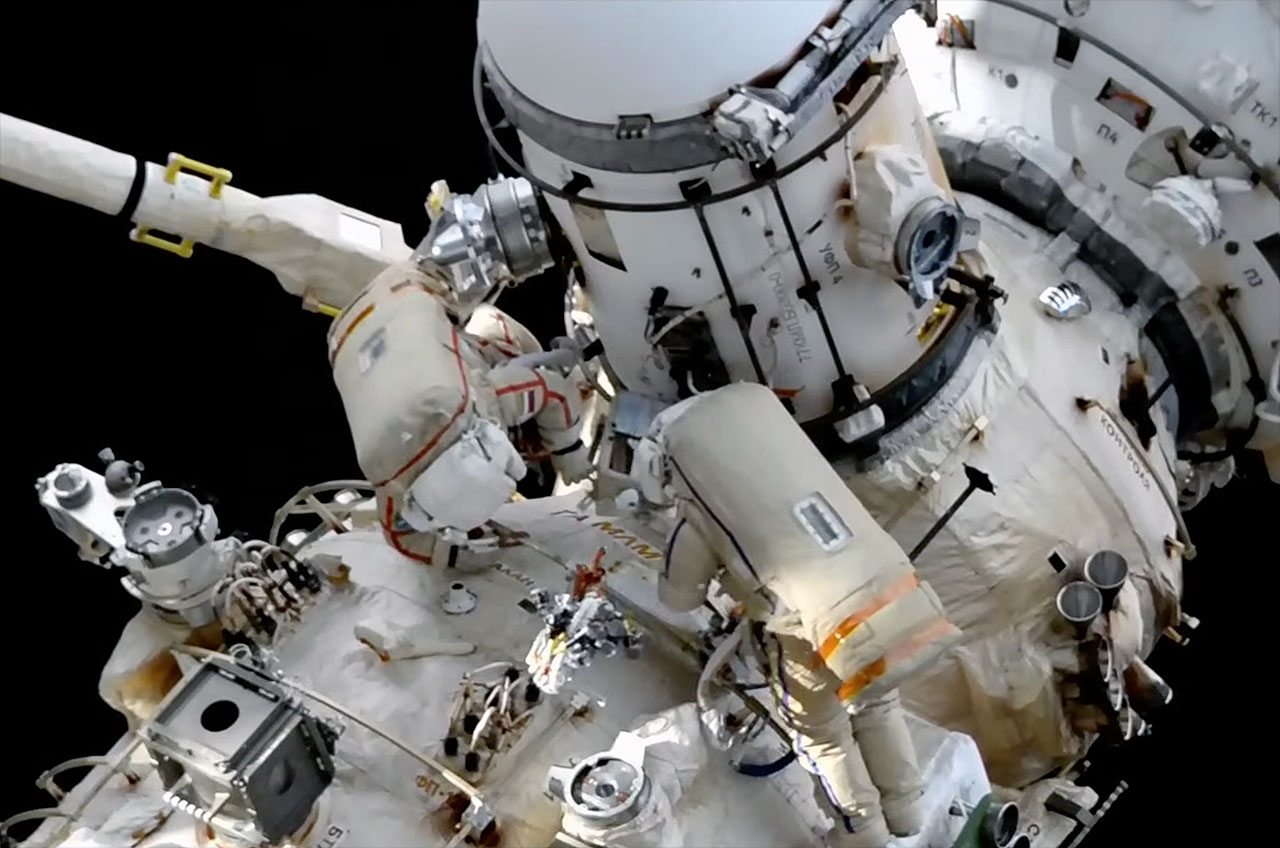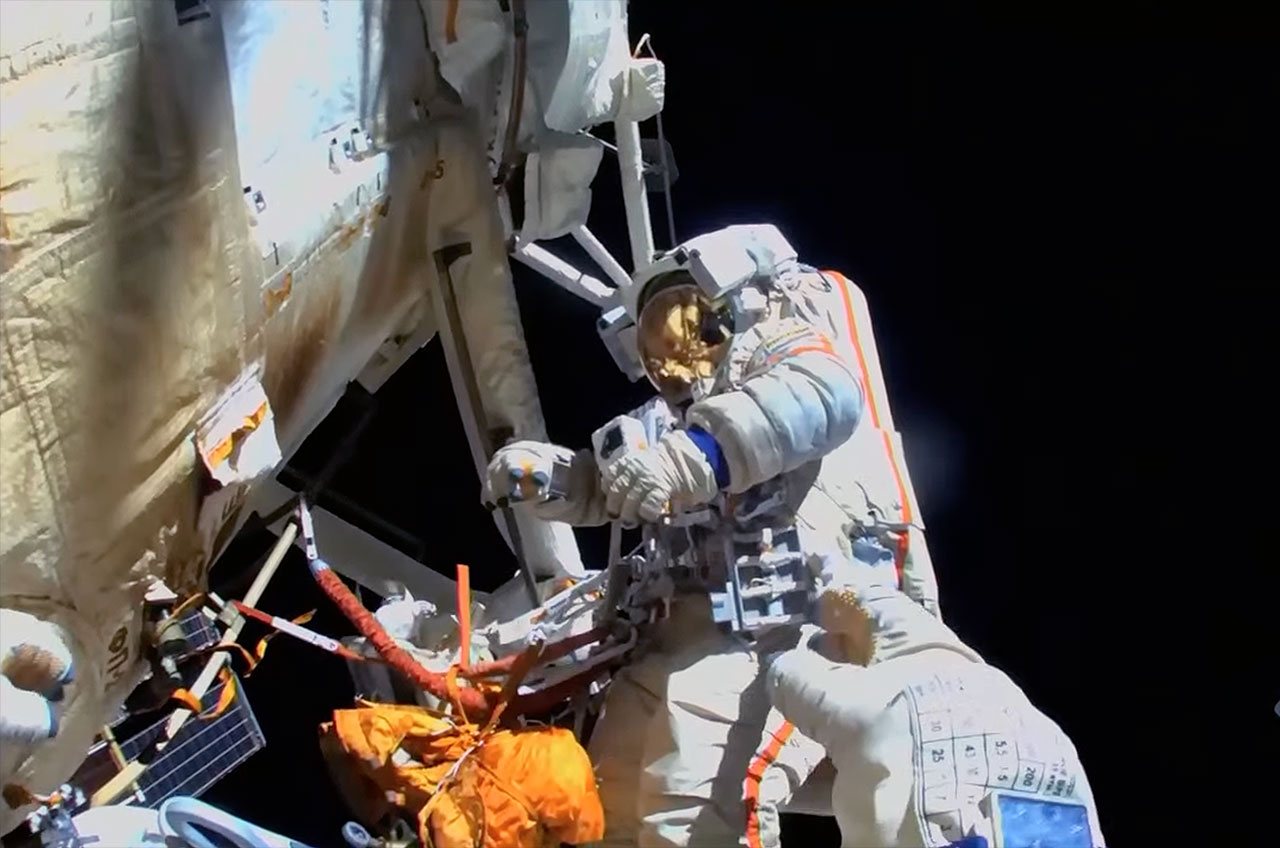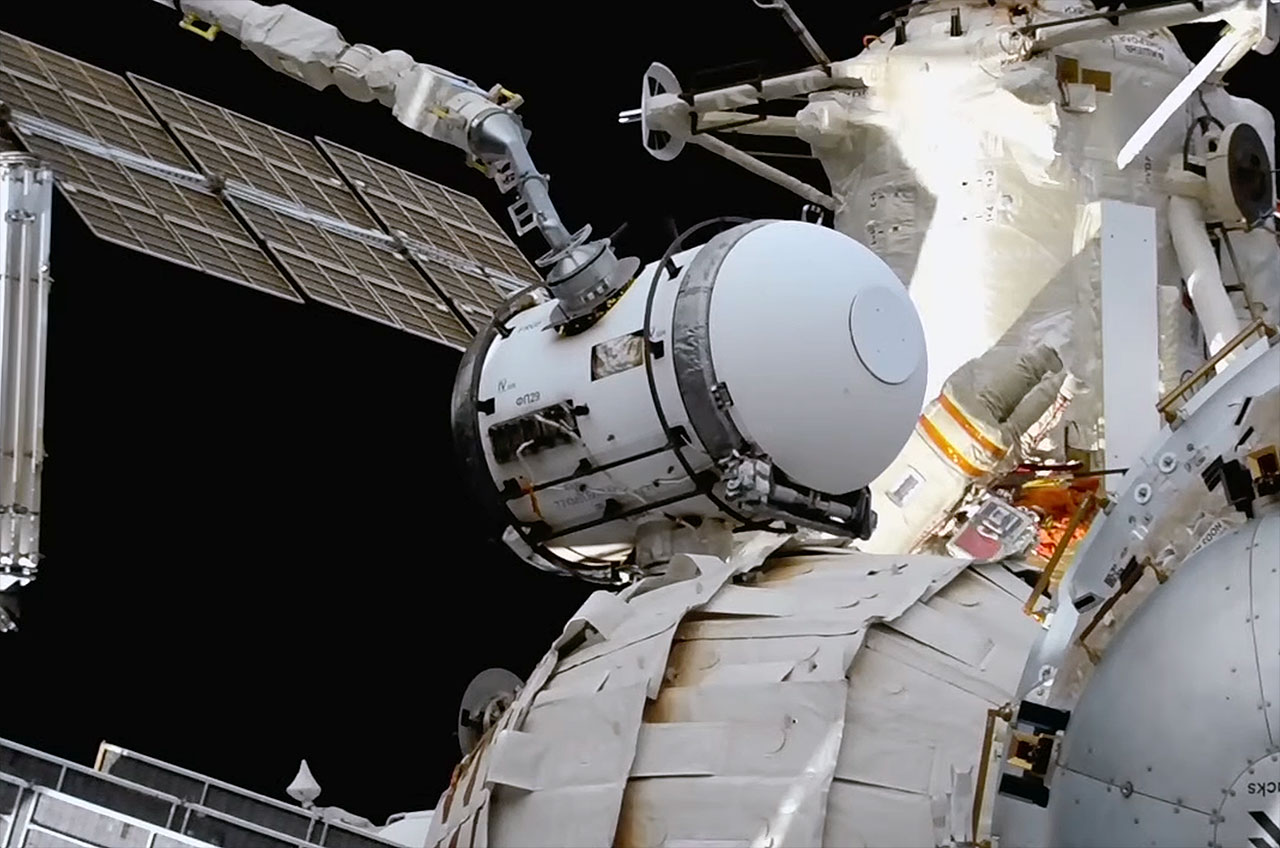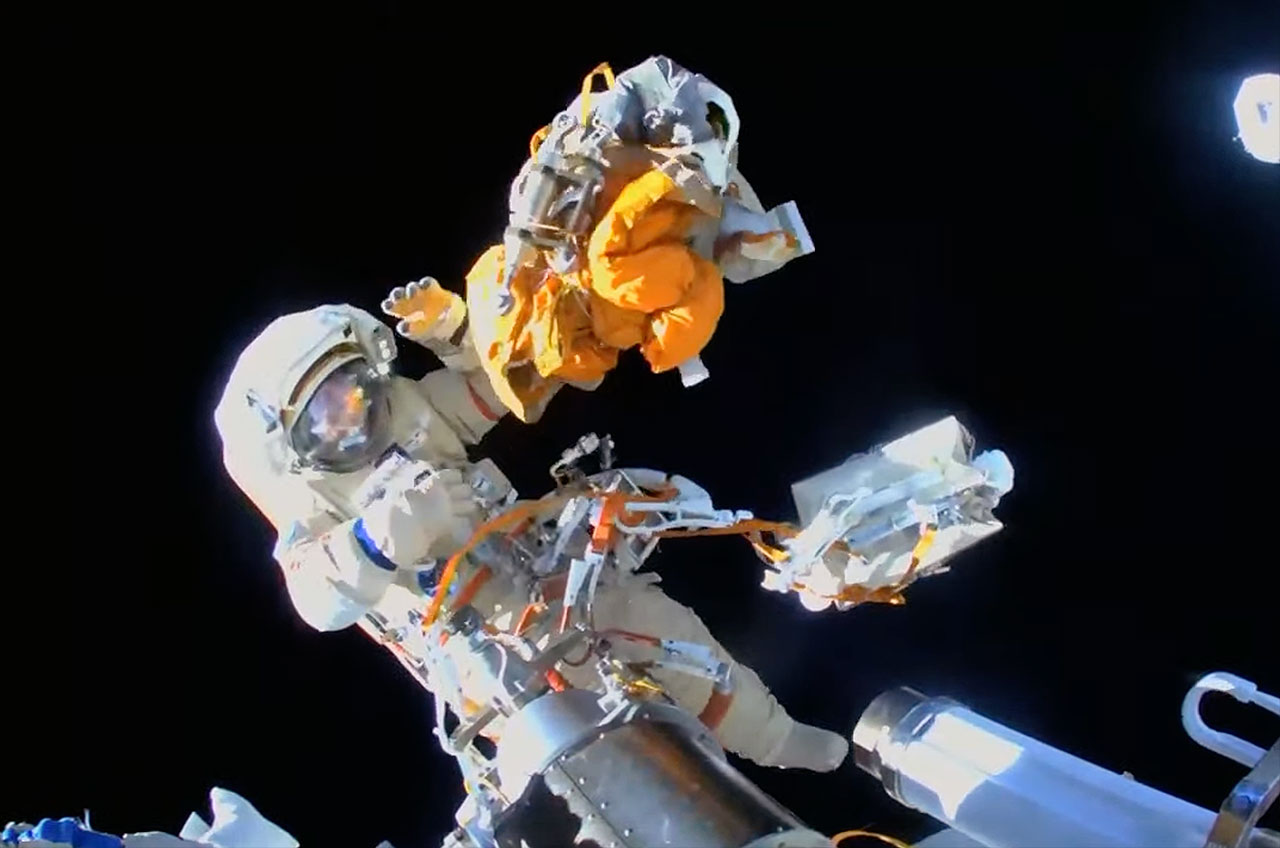Russian cosmonauts relocate airlock on International Space Station spacewalk
An equipment airlock that was launched in 2010 has finally reached its intended home, a Russian module added in 2021.

Two Russian cosmonauts reentered an airlock after successfully relocating a different airlock during a spacewalk outside of the International Space Station.
Expedition 69 commander Sergey Prokopyev and flight engineer Dmitry Petelin, both with the Russian federal space corporation Roscosmos, completed their outing on Wednesday (May 3) at 11:11 p.m. EDT (0311 GMT May 4). During the 7 hour and 11 minute spacewalk, the cosmonauts oversaw the move of an equipment airlock from the side of one module to the side of another on the Russian segment of the space station.
Prokopyev and Petelin began the extravehicular activity (EVA) at 4:00 p.m. EDT (2000 GMT) by first making their way to the Rassvet mini-research module, where the soon-to-be-moved airlock had been mounted since its launch on NASA's STS-132 space shuttle mission in May 2010. Once there, they disconnected six interface cables between the airlock and module, removed protective covers and unlocked launch locks to allow the airlock to be disconnected.
The work area and tasks were familiar to Prokopyev and Petelin, who previously worked together two weeks ago (April 18 to April 19) to similarly transfer a radiator from Rassvet to the same destination as the equipment airlock, the Nauka multipurpose laboratory module, which was launched in July 2021.
Related: The most memorable spacewalks of all time in pictures

Once the equipment airlock was freed of its connections to Rassvet, Roscosmos cosmonaut Andrey Fedyaev, an Expedition 69 flight engineer, worked from inside the station to grab hold of the airlock using the European Robotic Arm (ERA) and then slowly moved it from Rassvet to Nauka. As the 1,800-pound (816.5 kilograms) pressure vessel cleared its previous home, Prokopyev and Petelin cleaned up its former attach point, removing airlock tie rods and closing out insulation flaps.
They also bundled together some of the spent materials they would jettison overboard later in the spacewalk.
Breaking space news, the latest updates on rocket launches, skywatching events and more!
Prokopyev and Petelin then made their way over to Nauka to meet the airlock for its arrival. On their way, they stopped to inspect and photograph the radiator they earlier repositioned in preparation for their next spacewalk together on May 12, when they are scheduled to oversee the pressurization and deployment of the thermal control equipment.
The two cosmonauts next got into place to help Fedyaev align the airlock for its attachment to Nauka. With gentle and slow movements, the ERA manipulator brought the airlock into contact with the module, but Fedyaev could not get the airlock's latches to connect.

So, Prokopyev and Petelin moved in closer and, with one on each side of the airlock, grabbed hold of it and held it in place. Only then was Fedyaev able to use the robotic arm to push the airlock the final way so the hooks could be driven closed.
"I can hear the drives running," said one of the cosmonauts just past the five hour mark into the EVA.
Once capture was confirmed and a hard mating was achieved, Prokopyev and Petelin set to work making the power and data connections between the Nauka module and newly installed airlock. There were six cables needing to be run, with a connector on each side. Some of the connectors' caps were unexpectedly held in place with tape, such that the cosmonauts had to carefully use a knife to cut away the adhesive.
The relocated airlock is intended to deploy Russian experiment pallets and small satellites from inside the Nauka module. The station has two other similar purpose airlocks, one in Japan's Kibo laboratory and the other the Nanoracks Bishop airlock, a commercial unit berthed to the U.S. Tranquility node. These experiment airlocks are different from the exits used by astronauts and cosmonauts to go out on spacewalks, which are much larger.

With their work complete, Prokopyev and Petelin cleaned up their tools and translated back to the Poisk module to reenter the International Space Station. Before going back inside, Prokopyev tossed overboard an 11-pound (5 kilograms) package of spent equipment and no longer needed items, including five pieces collected from prior spacewalks. The bundle will eventually fall back to Earth and burn it up in the atmosphere.
"Alright, bye, bye," said Prokopyev as he jettisoned the garbage. "It flies beautifully."
The spacewalk was the fifth for Prokopyev, who has now logged 37 hours and 2 minutes on EVA. It was the third for Petelin, who has spent 21 hours and 31 minutes spacewalking.
The EVA was the fifth for the year and the 262nd dedicated to the assembly and maintenance of the orbiting lab.
Follow us @Spacedotcom, Facebookand Instagram.

Robert Pearlman is a space historian, journalist and the founder and editor of collectSPACE.com, a daily news publication and community devoted to space history with a particular focus on how and where space exploration intersects with pop culture. Pearlman is also a contributing writer for Space.com and co-author of "Space Stations: The Art, Science, and Reality of Working in Space” published by Smithsonian Books in 2018.
In 2009, he was inducted into the U.S. Space Camp Hall of Fame in Huntsville, Alabama. In 2021, he was honored by the American Astronautical Society with the Ordway Award for Sustained Excellence in Spaceflight History. In 2023, the National Space Club Florida Committee recognized Pearlman with the Kolcum News and Communications Award for excellence in telling the space story along the Space Coast and throughout the world.
